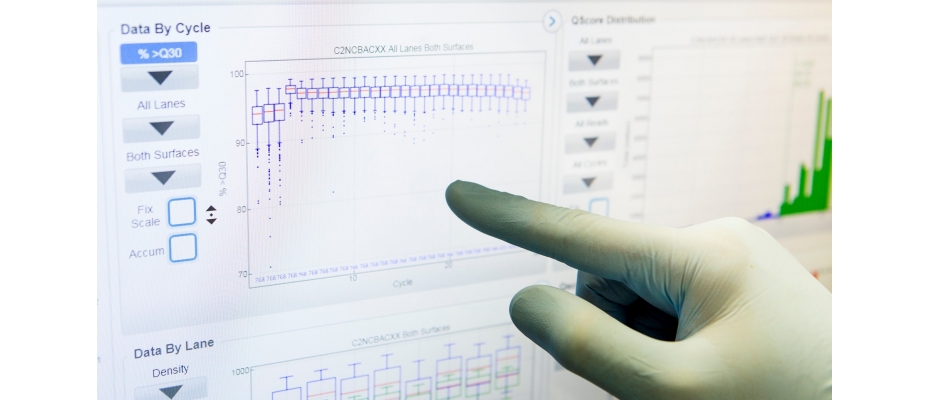
BCN, 12 Nov, 2020.- A consortium led by Dr Carmen Balaña of the Badalona Applied Research Group in Oncology (B-ARGO Group) of the Catalan Institute of Oncology (ICO) Badalona at the Germans Trias i Pujol Research Institute (IGTP) has published two papers that indicate better ways to stratify glioblastoma patients, which could allow doctors to make predictions about prognosis and make better decisions about which treatments to apply.
The papers have been published in the journal Clinical Cancer Research. Dr Cristina Carrato of the Pathology Department at the University Germans Trias i Pujol Hospital and the IGTP is first author on the first paper, which opens the possibility for new immunotherapy treatments for these tumours. Dr Anna Esteve-Codina of the CNAG-CRG is the first author on the second paper, which describes a novel method of stratification to help doctors manage glioblastoma patients better. Both studies involve a multidisciplinary consortium of hospitals and research centres and the patients and professionals from the Glioma Catalonia (GLIOCAT) Group.
Glioblastoma is an aggressive cancer of the brain or spinal cord. It is a rare disease, affecting only between 3 and 4 people in every 100,000, but it is the most common type of brain tumour in adults and is a very distressing disease. Brain tumours are difficult to treat because of their location, the most common treatment is surgery followed by radiotherapy and chemotherapy, but survival is usually poor. However, not all glioblastomas are the same and being able to identify the cells and mechanisms involved is essential to design more effective and targeted treatments.
Several ways to classify tumour types in patients are currently in use: two common methods are the Cancer Genome Atlas (TCGA) subtype classification, mainly used in clinical trials in the USA, and the Intrinsic Glioma Subtypes IGS, which is more common in Europe. Several researchers have proposed molecular analyses, but these studies did not take into account any treatments patients had had previously and so it is not possible to compare the effectiveness of the different methods and sort patients into different groups regarding prognosis and the best treatments.
“We wanted to find out the impact of the different subtypes on overall survival and identify other molecular alterations, which could be related to how patients would progress. This would help doctors take much better decisions,” says Balaña. “To do this we took a collection of samples from patients who had all received the same standard first-line treatment, so they were directly comparable. We analysed them using the standard techniques, but additionally we perfomed RNA-seq analysis of the paraffin embedded samples. This is the first time this has been done for this type of tumour in a group of samples from patients that have been treated uniformly.”
The samples were collected from 124 patients from six hospitals in Catalonia from 2004 to 2014. The complex investigation involved analysis of the medical data of the patients and their progression and an array of analyses carried out to identify subtle molecular differences in tumour samples. The objective was to find different identifiable subtypes of tumours that would be susceptible to new and more effective therapies.
The work of the consortium has borne fruit and the two papers show two important outcomes.
“We have found that the traditional molecular subtype separation of patients do not help doctors to predict how they will progress after their first treatments” explains Esteve-Codina. “However, we have found genes related to survival in one of the groups, which is extremely promising as a new prognostic marker and should be confirmed with more research and a larger group of patients,” she adds.
The group also found one type of tumour, which had been classified in two different ways by the two systems currently used by doctors. The cells in these tumours have characteristics extremely similar to melanoma (skin cancer) cells that respond to immunotherapy treatments.
“Because we have used RNA analysis for the first time, we have been able to select antibodies directed to specific genes,” says Carrato, this paves the way for immunotherapy treatments for this group of tumours.
“This type of multidisciplinary and multi-centre research is essential to solve the more complex problems of cancer treatment,” concludes Balaña. “In this case, while looking for better diagnostics we have also identified a new direction for treatment of glioblastoma and we are confident that future research will consolidate these advances.”
Funding
The work involved pathology and radiology departments from the six hospitals involved and research groups from the hospitals and other biomedical research centres in the region. It was funded by the Fundació La Marató TV3 (665/C/2013), the Spanish Instituto de Salud Carlos III ISCIII/MINECO (PT17/0009/0019), ISCIII/AES (INT19/00032) and ISCIII/AES (CM19/00068) with co-funding from the European Regional Development Fund and the support of the Health Department of the Generalitat de Catalunya (PERIS SLT006/17/00040)
Works of reference:











